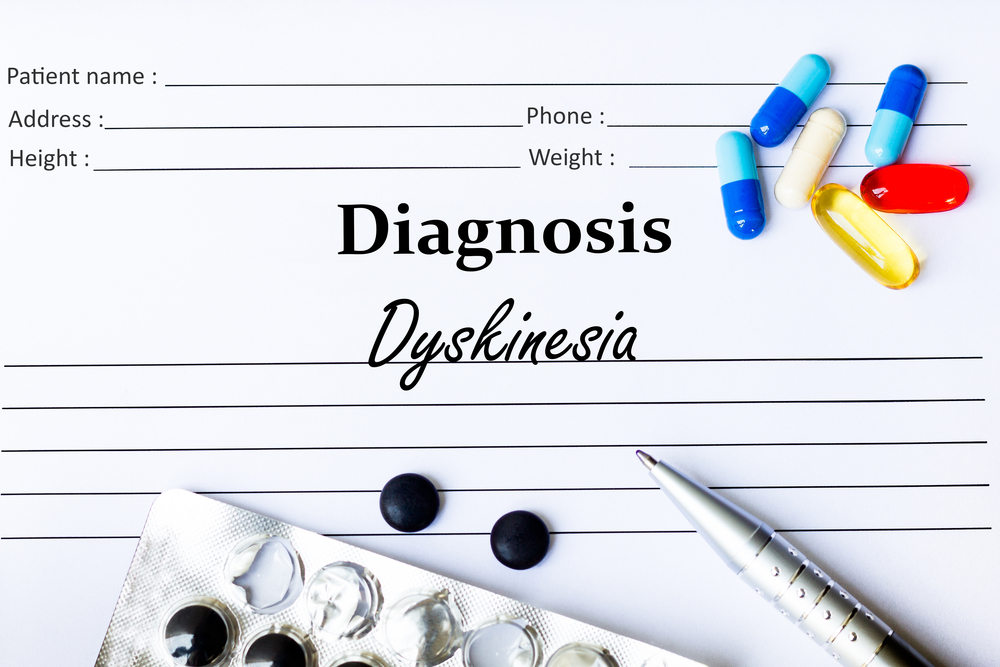
Diagnosis and Treatment Options for Dyskinesia
Dyskinesia causes uncontrollable, abnormal, and involuntary movements. This neurological disorder can cause minor tics as well as full-body tremors. It has been known to occur among people who are undergoing treatment with long-term neuroleptic medication. Neuroleptic medications are antipsychotic medications that affect dopamine receptors and the central nervous system.
Dyskinesia also occurs with the long-term use of drugs such as levodopa, which are required to manage Parkinson’s disease. Brain injury can also cause dyskinesia. Sometimes, dyskinesia can be a standalone condition as well. Depending on the cause, there are the following major types of dyskinesia.
- Levodopa-induced or Parkinson’s dyskinesia
- Tremors
- Dystonia
- Chorea
- Tardive or delayed dyskinesia
- Myoclonus
- Spasmodic torticollis
- Ballism
- Athetosis
- Stereotypies and tics
Common symptoms of dyskinesia
Dyskinesia symptoms differ from person to person and also depend on the cause of the disorder. The symptoms can range from mild intensity to severe tremors. The following are some of the common symptoms observed among patients with dyskinesia.
- Slight involuntary shaking of an arm, a leg, or the head
- Severe tremors in multiple parts of the body
- Fidgeting
- Body swaying involuntarily
- Head bobbing
- Restlessness
- Twitching
- Wriggling
Diagnosis of dyskinesia
Diagnosing dyskinesia can be difficult since most of the symptoms are similar to the tremors that occur due to Parkinson’s or any other tic disorder. In the case of dyskinesia induced by antipsychotic medications, the symptoms do not appear immediately after starting the medications. The symptoms may become apparent months or years later. In some cases, the tremors and tics appear after the medications have been stopped. So, it becomes difficult for doctors to diagnose what has caused the dyskinesia.
Doctors often recommend a test known as Abnormal Involuntary Movement Scale to check whether a person has dyskinesia. The Abnormal Involuntary Movement Scale is a 12-item scale that has clinical parameters that assess various factors such as the patient’s awareness level for movements, the severity of tremors, and level of incapacitation. These help to diagnose dyskinesia.
A doctor may recommend blood tests and imaging scans of the brain. These tests are done to rule out other disorders that have symptoms similar to dyskinesia. These disorders include cerebral palsy, Huntington’s disease, Parkinson’s disease, Tourette’s syndrome, stroke, and so on.
Treatment options for dyskinesia
The treatment of dyskinesia depends on several factors, such as:
- When do the symptoms occur?
- What is the severity of the symptoms?
- What is the age of the patient?
- How long has the person been on antipsychotic medications?
It is always better to prevent dyskinesia. The best way to do this is by being aware of the side effects of any prescribed antipsychotic drug. A doctor may ask the patient to adjust the dosage of dyskinesia-inducing medication. Monotherapy with dopamine receptor agonists is sometimes recommended in the early stages of Parkinson’s to prevent the onset of dyskinesia. Severe symptoms are often controlled with surgical treatments such as deep brain simulation. This is usually the last treatment when other options have failed in alleviating the symptoms of dyskinesia.
For the treatments of dyskinesia to be effective, it is necessary to do regular exercises as well. This can include swimming or walking or any exercise that keeps all the muscles and joints active. Stress management is also essential as stress can often trigger the symptoms of dyskinesia.




